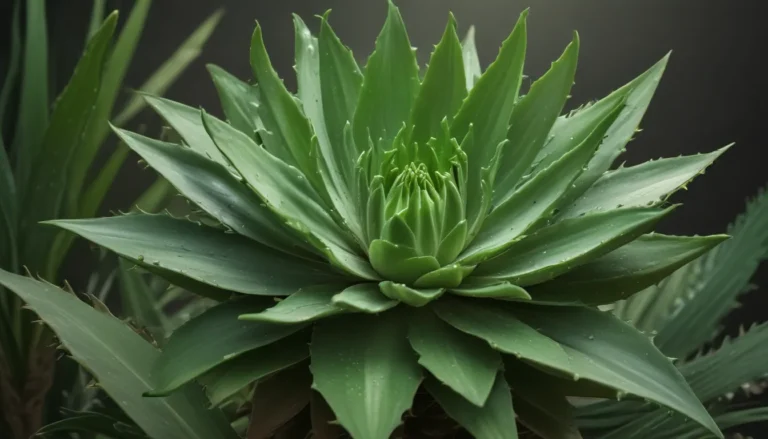The pictures we use in our articles might not show exactly what the words say. We choose these pictures to make you interested in reading more. The pictures work together with the words but don’t take their place. The words still tell you the important facts.
In the vast world of culinary delights, there exists a herb that stands out for its unique aroma, refreshing flavor, and multitude of health benefits. Cilantro, also known as coriander or Chinese parsley, has captured the taste buds of many cuisines around the globe. However, there is more to cilantro than meets the eye. This versatile herb has a rich history dating back thousands of years and boasts a myriad of essential nutrients and antioxidants. In this article, we will delve into the captivating world of cilantro and uncover eight astounding facts that will make you appreciate this herb even more.
Unveiling the Astonishing Facts About Cilantro:
1. Cilantro: More Than Just a Name
- Cilantro and coriander are two sides of the same coin. In North America, the leaves of this herb are known as cilantro, while the dried seeds are referred to as coriander. This dual nomenclature adds to the charm of this versatile plant.
2. A Family Affair: The Parsley Connection
- Cilantro, scientifically identified as Coriandrum sativum, belongs to the parsley family, Apiaceae. This botanical family includes other well-known members such as parsley, carrots, and celery, connecting cilantro to a rich lineage of flavorful herbs and vegetables.
3. Delving into History: A Journey Through Time
- With a history that spans thousands of years, cilantro has been cherished by ancient civilizations like the Egyptians, Greeks, and Romans for both its culinary and medicinal properties. The legacy of this herb continues to thrive in modern-day kitchens.
4. A Treasure Trove of Nutrients
- Beyond its flavorful appeal, cilantro is a powerhouse of essential nutrients. Packed with vitamins A, C, and K, as well as minerals like potassium, calcium, and manganese, this herb provides a nutritional boost to any dish it graces.
5. The Taste Conundrum: A Genetic Quirk
- Surprisingly, some individuals have a genetic aversion to cilantro, perceiving it as tasting like soap or metal. This unique phenomenon is attributed to specific chemical compounds present in the herb, highlighting the diverse reactions cilantro can elicit.
6. Defender Against Oxidative Stress
- Cilantro's antioxidant properties make it a valuable ally in combating oxidative stress and promoting overall health. By aiding in the reduction of chronic diseases such as heart disease and certain types of cancer, cilantro proves its worth beyond culinary delights.
7. Healing Powers: Medicinal Marvel
- In addition to its culinary uses, cilantro has a long-standing history in traditional medicine. From aiding digestion to acting as a natural diuretic and even offering relief from anxiety, cilantro's medicinal properties have been harnessed for centuries.
8. Flavorful Alchemy: Culinary Magic
- Cilantro's unique flavor profile elevates a myriad of dishes, from salsas and guacamole to curries and salads. Its bright, citrusy notes add a refreshing touch that enhances the taste experience, making every bite a delight for the senses.
Embracing Cilantro’s Allure:
In conclusion, cilantro emerges as a true marvel in the world of herbs, offering a blend of history, health benefits, and culinary delights. Whether you savor its distinct taste or are part of the minority that finds it less appealing, there is no denying the captivating influence cilantro wields. As you explore the vibrant world of this herb, consider adding a sprinkle of cilantro to your next meal to unlock its unique flavors and reap the benefits it has to offer.
Enlightening FAQs:
- What is cilantro?
-
Cilantro is a green, leafy herb known as coriander or Chinese parsley, originating from Southern Europe, North Africa, and Southwest Asia.
-
What are the health benefits of cilantro?
-
Cilantro is rich in antioxidants, vitamins, and minerals that promote heart health, boost immunity, aid digestion, and reduce inflammation.
-
Why do some people dislike the taste of cilantro?
-
The aversion to cilantro's taste is often linked to genetics, with certain individuals perceiving it as soapy or unpleasant.
-
How can I use cilantro in cooking?
-
Cilantro can be incorporated into salads, salsas, soups, curries, and marinades for a flavorful touch. Add it fresh towards the end of cooking to preserve its essence.
-
Can cilantro be grown at home?
-
Yes, cilantro thrives in pots or gardens with well-drained soil, sufficient sunlight, and regular watering for optimal growth.
-
Are cilantro stems usable in cooking?
-
Absolutely! Cilantro stems carry as much flavor as the leaves and can be utilized in cooking to enhance taste and texture.
-
Is cilantro the same as coriander?
-
Yes, cilantro refers to the leaves, while coriander denotes the seeds, both contributing distinct flavors to culinary creations.
-
Are there any precautions for consuming cilantro?
- Some individuals may have cilantro allergies, and overconsumption might interact with certain medications. Consult a healthcare professional if you have concerns.
Immerse yourself in the world of cilantro's fascinating history and health benefits, and discover why this herb continues to captivate taste buds worldwide. Explore the interplay of cilantro's leaves and seeds in global cuisine and uncover new reasons to cherish this versatile ingredient. Let cilantro weave its magic in your culinary creations, adding a dash of flavor and a touch of health to your dishes.
The Journey Continues:
Our dedication to delivering accurate and engaging content remains steadfast at the core of our mission. Every fact you encounter is contributed by individuals like you, enriching our platform with diverse insights and knowledge. With meticulous editorial review processes in place, we ensure that the information shared is not only intriguing but also reliable. Trust in our commitment to authenticity as you embark on your learning journey with us.






